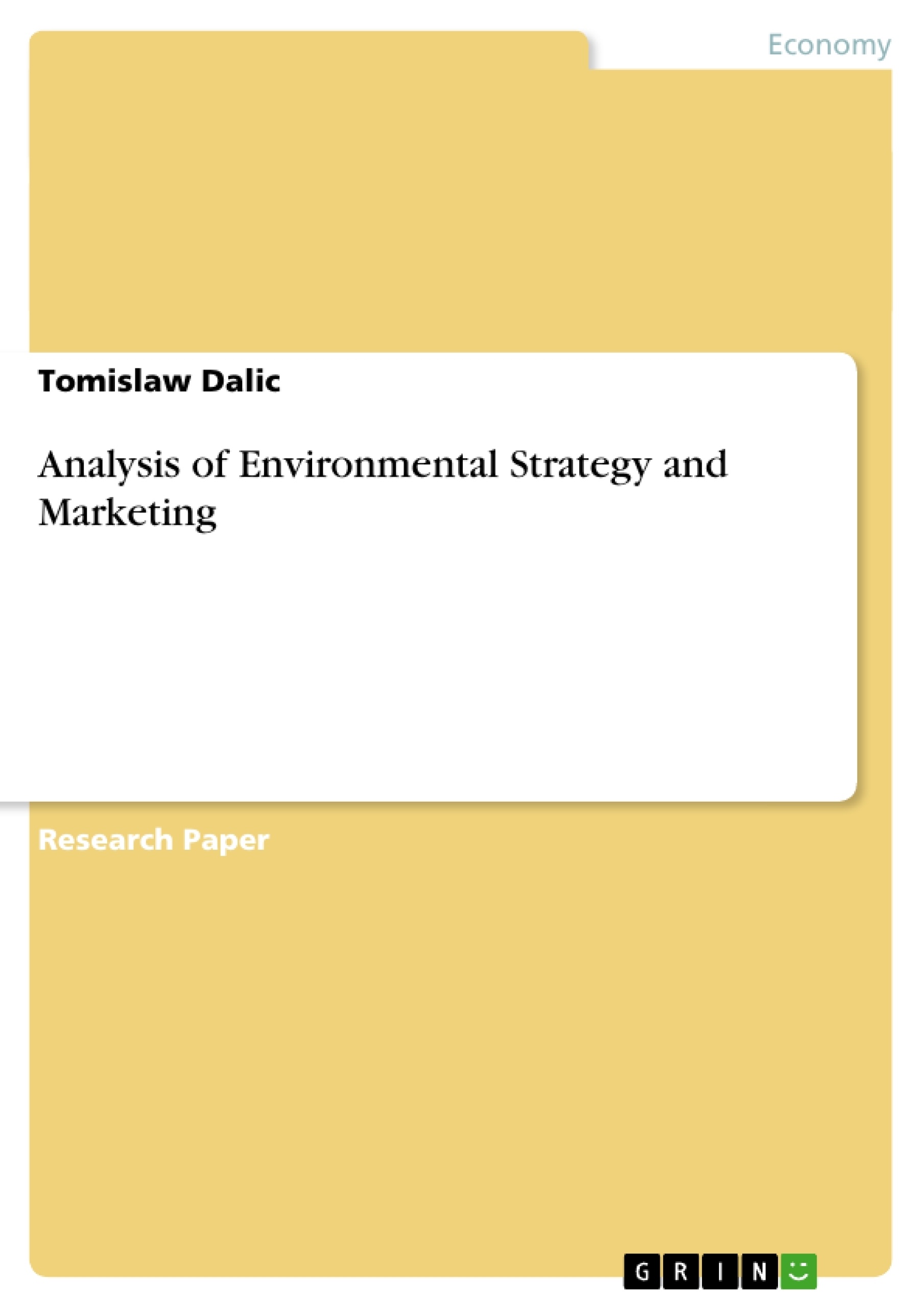Excerpt
Table of Contents
Introduction
The main Ecological problems related to the production of vehicles of DaimlerCrysler
Environmental Strategy of DaimlerChrysler Group
Corporate strategy
Functional strategies
The Green Marketing Perspective – Strategic View Points
Segmentation, Target Groups and Positioning
The Marketing Mix – Product, Price, Promotion and Place
References
Introduction
DaimlerChrysler is one of the world's leading automotive, transportation and services companies. Its passenger car brands include Maybach, Mercedes-Benz, Chrysler, Jeep, Dodge and smart. Commercial vehicles are produced under the Mercedes-Benz, Freightliner, Sterling, Western Star, Setra, Thomas Built Buses, Orion and American LaFrance brands.
372,500 employees work for DaimlerChrysler worldwide. Revenues were EUR 152.9 billion ($136.1 billion) in 2001. DaimlerChrysler today has a global workforce in 37 countries, a global shareholder base mainly consisting out of institutional shareholders, global brand awareness and a global outlook. It sold 3,985,600 units of passenger cars and 492,900 units of commercial vehicles in 2001. From 2002 until 2004 DaimlerChrysler will invest EUR 41 billion ($36.5 billion) in future projects. DaimlerChrysler's strategy rests on four pillars: Global Presence, Strong Brands, Broad Product Range, and Technology Leadership.
This paper has the following structure. First, the main ecological problems of DaimlerChrysler are discussed using the eco-matrix. Then the environmental strategy on different levels of strategy is identified. The paper ends with a discussion of the environmental marketing outlook for DaimlerChrysler.
The main Ecological problems related to the production of vehicles of DaimlerCrysler
illustration not visible in this excerpt
As we can see in the Eco-matrix above that we have applied to the case of DaimlerCrysler there are ecological problems affecting all the phases of the product life-cycle from design to disposal or recycling. Using that model we can find out the most important between them.
The high fuel consumption of vehicles and the related waste of energy, the noxious emissions during the production and the using of the vehicles and the pollution of soil and water coming from the huge amount of industrial waste, can be considered the principal problem the company has to face. Going through the matrix we can analyse the environmental impacts of each step of the production.
Air
The pollution of the air is created mainly during the production and the use of the vehicles, Combustion processes at DaimlerChrysler production plants generate air pollutants such as sulphur dioxide (SO 2 ),carbon monoxide (CO)and nitrogen oxides (Nox). DaimlerChrysler brought about a dramatic reduction in these emissions as long ago as the 1980s. SO 2 emissions at DaimlerChrysler have settled at a consistently low level over the last decade, thanks to the use of advanced technologies. The drop in SO 2 emissions has been such that sulphur dioxide, which only a few years ago was the principal cause of winter smog and acid rains no longer a major environmental problem. Carbon monoxide is oxidized in the atmosphere to form CO 2, thus contributing to the greenhouse effect, while nitrogen oxides are primarily involved in the formation of summer smog and acid rain. Modern technologies and cutting-edge air treatment processes have brought about a distinct reduction in NOx emissions at Daimler-Chrysler in recent years.
During their use vehicles cause emission of toxic substances like: Carbon Monoxide (CO), Nitrogen oxide (NOX), hydrocarbons (HC) and diesel particles (PM).They contribute to formation of acid rain and ground-level ozone. One of the target of the company is to reduce the carbon dioxide output from cars under 186 grams per kilometre.
Water
The main target of the company is to reduce wastewater burden surveying and repairing the drainage networks, prevent groundwater contamination, and create plant-based wastewater system treatment with the task to get the ultimate objective of a closed-loop rinsing water system.
[...]
- Quote paper
- Tomislaw Dalic (Author), 2002, Analysis of Environmental Strategy and Marketing, Munich, GRIN Verlag, https://www.grin.com/document/20726
Publish now - it's free






















Comments